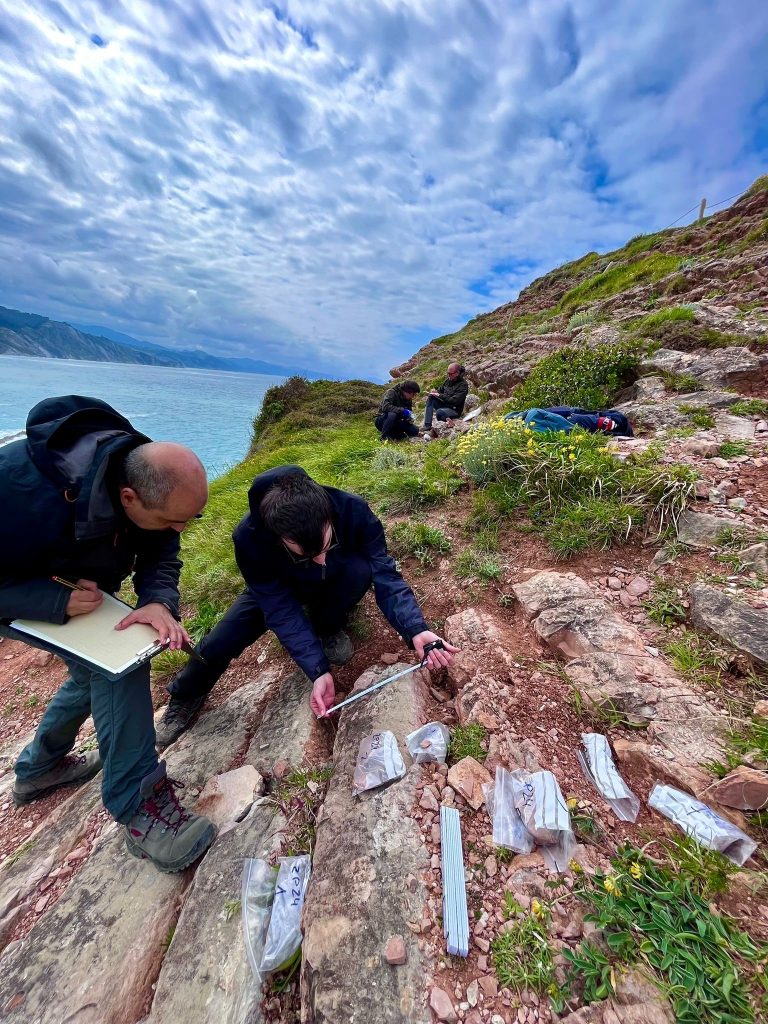(Zaragoza, Monday, April 7, 2025). Sixty-six million years ago, at the boundary between the Cretaceous and Paleogene periods, the Chicxulub asteroid struck the coast of Mexico’s Yucatán Peninsula, triggering severe environmental disruption and causing the extinction of 76% of marine life. Previous studies showed that the marine ecosystem within the crater recovered in just 30,000 years — a rapid pace for which no clear explanation had been found until now.
A study published today in the prestigious journal Nature Communications offers a plausible explanation. The research is led by geochemist Honami Sato (Kyushu University, Japan) and includes contributions from micropaleontologists Ignacio Arenillas, José Antonio Arz, and Vicente Gilabert from the Department of Earth Sciences–IUCA at the University of Zaragoza. Their findings reveal that, following the Chicxulub impact, the ancient Gulf of Mexico became a semi-enclosed sea subject to intense hydrothermal activity caused by large-scale fractures in the Earth’s crust generated by the collision.
As a result, hot fluids rich in dissolved metallic nutrients rose from the subsurface, stimulating the growth of bacterial phytoplankton and facilitating the rapid recovery of the ecosystem.

The identification of a region with hydrothermal sources is based on the behavior of the osmium isotope ratio (¹⁸⁷Os/¹⁸⁸Os) in rocks deposited during the first three million years after the impact. These rocks were collected from IODP Site M0077—a drilling operation conducted by an international consortium within the Chicxulub crater—and from four Mexican localities surrounding it. It is known that the vaporization of the Chicxulub asteroid released large amounts of ¹⁸⁸Os, causing globally low ¹⁸⁷Os/¹⁸⁸Os values in ocean sediments during the first 200,000 years after the impact. After this period, values in ocean sediments returned to levels similar to those at the end of the Cretaceous. However, the new study demonstrates that in the Gulf of Mexico, this return to normal conditions was delayed until around 700,000 years after the impact. This suggests the existence of massive submarine hydrothermal sources at the beginning of the Paleogene, continuously releasing fluids rich in ¹⁸⁸Os and dissolved heavy metals, now recorded as geochemical anomalies in the analyzed rocks.

In this study, the Biostratigraphy team at the University of Zaragoza was responsible for the micropaleontological analysis of planktonic foraminifera—marine plankton protozoa that left abundant fossil remains. These organisms are widely used in geology to date rocks, reconstruct past climatic and environmental changes, and analyze mass extinction events such as the Cretaceous–Paleogene boundary. The high-resolution study carried out at the University of Zaragoza provided a detailed age model used to assign a precise age to each geochemical sample analyzed in Japan. This precise chronological control enabled researchers to faithfully reconstruct changes in the ¹⁸⁷Os/¹⁸⁸Os ratio, heavy metal content, and the composition of phytoplankton and zooplankton communities that inhabited the Gulf of Mexico at the beginning of the Paleogene. Moreover, the temporal evolution of plankton group abundances points to a period of eutrophic conditions—with high levels of dissolved nutrients in surface waters. Significantly, this eutrophic phase coincides in duration with the interval showing anomalous ¹⁸⁷Os/¹⁸⁸Os values, suggesting a cause-effect relationship.
The new publication reveals that, paradoxically, the Chicxulub impact not only triggered the mass extinction at the Cretaceous–Paleogene boundary, but also contributed to the recovery of marine ecosystems in the Gulf of Mexico by creating an extensive hydrothermal field unmatched in today’s oceans. The research team hopes to conduct similar studies in more distant regions, such as the Caribbean Sea or the Pacific Ocean, with the aim of clarifying global patterns of marine ecosystem recovery and identifying the key factors that influenced them.
Reference:
Sato, H., Ishikawa, A., Arenillas, I., Arz, J.A., Gilabert, V., Claeys, P., Goderis, S., Lowery, C.M., Gulick, S.P.S., Morgan, J.V. (2025). Prolonged 187Os/188Os excursion implies hydrothermal influence after the Chicxulub impact in the Gulf of Mexico. Nature Communications. https://doi.org/10.1038/s41467-025-58112-x

